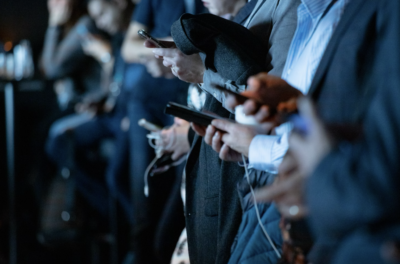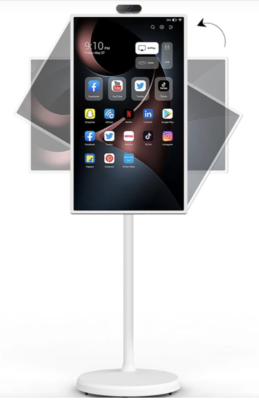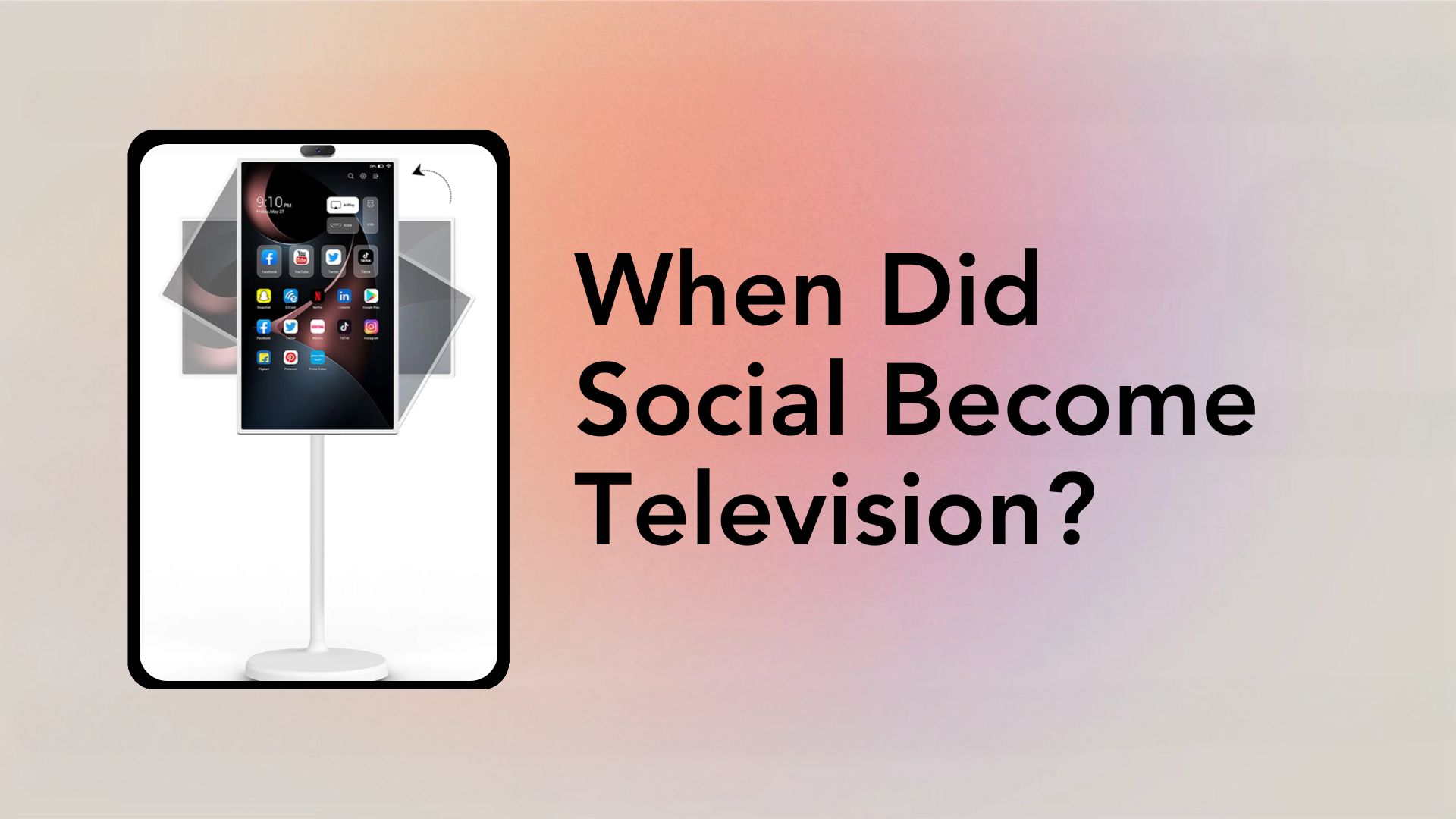Television has long been referred to as the “small screen” as a way of differentiating it from the bigger, “silver screen” of movie theaters. But much in the same way that the emergence of premium cable networks and streaming services blurred the lines between TV and movies, the sea change in the quality of content produced by creators is blurring the lines between the small screen and the even smaller screens on smartphones and tablets.
As a result, the entertainment industry has moved from streaming services disrupting traditional movie theaters and TV to creators and social platforms doing so.
Open Influence Senior Creative Director Sierra Moore offered one reason for the shift, saying, “Quickly evolving technology and tools, such as artificial intelligence and the phones that have become an extension of us all, have helped democratize the ability to produce quality content.”

Just look at the difference in quality between Me at the Zoo, the first video ever uploaded to YouTube, by co-founder Jawed Karim on April 23, 2005, and the video for “Get Him Back” by pop superstar Olivia Rodrigo, shot entirely on an iPhone 15 Pro and shared on the Google-owned video site Sept. 12, 2023.
“When you combine this with the convenience and expansive reach offered by social media platforms for content distribution and consumption, it becomes clear how and why the divide between social media and traditional television is dwindling,” Moore added.
Shift at the Social Platforms
Over the past few years, the updates for family and friends that dominated the early social media era began to move to more sophisticated messaging applications, leaving the platforms’ feeds in the hands of creators and publishers.
The rise in popularity and more robust technology of messaging apps like Meta’s Messenger and WhatsApp, as well as the growth of Snapchat, where friends share disappearing messages with each other, and chat apps like Discord, has meant that much of the sharing updates with family and friends that was the backbone of early social media has shifted to those platforms, leaving the social network feeds to their respective platforms’ algorithms and the handful of accounts they deem to be popular.
When Facebook began emphasizing native content in 2013, at the expense of content from newsrooms and studios, it pushed those entities away from its platform, and now, much of the native content it sought to hang its hat on is posted elsewhere, leaving the feeds to those creators who have proven adept at moving in lockstep with its algorithms.
Ryan Broderick wrote in his newsletter, Garbage Day, “A million layoffs later, everyone has a favorite YouTuber, but no one works for a media company anymore. Except, now the platforms are panicking because the big creators figured out how to do something the platforms never could: Get people to pay for content.”
According to recent research from Insider Intelligence, watching videos was by far the most popular activity on social platforms, chosen by 72.4% of respondents. The only other choices to top 50% were watching Stories (56.7%), liking or commenting on content (54.2%), and direct messaging (53.3%).
TikTok Is the Closest to TV
Daniel Faltesek, Associate Professor at Oregon State University, compared the flow of the For You feed on TikTok with the flow of television, particularly late-night TV, in a study that he and some colleagues and students published.
Noting that unlike the days of “rabbit ears,” or antennas, people have more control over the flow of content to their devices, much as they do on social networks, Faltesek and company wrote, “The result of this analysis challenges many commonly held ideas about what TikTok ‘is’ and offers evidence that TikTok is television, not social media. We argue that this shift of perspective is important for advancing understanding of this platform.”
YouTube previously had a big advantage over TikTok in terms of being viewed on connected TV devices, laptops, and phones, while TikTok had been essentially limited to the latter. TikTok has taken steps to narrow that gap.
Indeed, TikTok recently optimized and upgraded its experience for larger devices, such as foldable gadgets and tablets, and the platform added support for horizontal videos to go with the vertical content that is ubiquitous on phones.
TikTok also is rolling out the ability for creators to upload videos up to 30 minutes long, with Coco Mocoe, host of marketing podcast Ahead of the Curve With Coco Mocoe, theorizing that TikTok may push more midroll ads, which, in turn, would incentivize creators to turn to longer content for more monetization opportunities.
“Social media is turning into TV, and TV is becoming more social,” said Alexandra Mathieu, Vice President of Strategy and Creative at Open Influence. “This convergence is happening rapidly. The concept of ‘TikTok TV,’ where TikTok creators produce 30-minute ‘epiposts’ (a fusion of episodes and posts), is just around the corner.”
The platform introduced Series last March as a way for creators to offer premium longer-form content, enabling them to include up to 80 videos, each up to 20 minutes long, and charge subscriptions for access to that content.
YouTube Thrives on CTV
YouTube rolled out and put muscle behind short-form video option YouTube Shorts to compete with TikTok in that space, but longer-form content also continues to thrive on the Google-owned video platform.
Indeed, YouTube surpassed Netflix as the most-watched streaming service on connected TV devices in 2023, and Insider Intelligence pegged the percentage of YouTube viewers on CTV devices at 59.2% last year, projecting a rise to 60.1% in 2024.
YouTube’s move to invest $14 billion in NFL Sunday Ticket, bringing out-of-market National Football League games to its platform, further strengthened its position.
Evan Shapiro, who bills himself as “Media’s Official Unofficial Cartographer,”wrote, “Video is bifurcating into two main categories: long-form, premium, lean-back horizontal CTV content; and short-form, time-killing, vertical mobile content. Audiences will utilize both, in large amounts. But the premium 16:9 video experience will become the in-home default for most viewers, while the 9:16 phone-based video experience will be relegated mostly to ‘in-between times.’ Both will offer effective advertising platforms, but the horizontal experience will increasingly be seen by users and media buyers as ‘premium,’ whereas mobile will be viewed as ‘incremental.’”
Strange Bedfellows
TikTok has been inundated with pirated films and episodes of TV shows, but rather than lashing out, some producers of that content have experimented with sharing it on the platform themselves, helping to boost awareness of their new releases.
Paramount Pictures uploaded its entire 107-minute Mean Girls feature film to the platform Oct. 7, in 23 parts, and Peacock shared the pilot episode of comedy series Killing It on TikTok in August, prior to the debut of that series’ second season.
Peacock also made the first three episodes of Killing It available on YouTube.
TV manufacturers have been ready for this new reality for some time now. For example, Samsung rolled out its Sero in 2020, a 4K set that can be rotated vertically or horizontally, mimicking the functionality of smartphones and tablets.

What This Means for Creators
The lines between YouTube and “traditional” TV continue to blur for creators, as well. A recent example is the move by longtime YouTube production studio Theorist Media to tap FilmRise’s creator partner program and begin producing content from its franchises such as Film Theory, Food Theory, Game Theory, and Style Theory for AVOD, FAST, pay TV, and subscription VOD channels.
Creators in general have expanded beyond short-form video content such as Facebook and Instagram Reels, TikTok videos, and YouTube Shorts, trying their hand at blogs, communities, CTV, email, forums, longer-form videos, out-of-home, podcasts, and other ways of reaching their audience.
When TikTok scuttled its Creator Fund last December, it also began telling creators that its users spend roughly one-half of their time on the platform watching videos over one minute long, and only videos of at least 60 seconds would be eligible for monetization.
And Mark Zuckerberg, CEO of Facebook and Instagram parent Meta, said during the company’s third-quarter-2023 earnings call that its focus was shifting to all videos holistically, rather than its recent push behnind Reels.
What This Means for Brands
Just as creators are no longer limiting themselves to short-form videos, it behooves brands to do the same. Creators and brands can collaborate on longer-form video for projects such as product launches, tutorials, and unboxing videos, and business-to-business marketers can tap the expertise of creators in their field. The possibilities are endless. The small screen is still key, but it’s not the only screen.
Insider Intelligence said in its Social Trends to Watch in 2024 report that brands and creators will put an emphasis on original, “episodic” content, with cultural relevance remaining key, rather than attempting to react to every single trend that emerges on TikTok and other platforms.
The research firm wrote, “The platforms, advertisers, and creators would all benefit: Longer videos mean greater time spent, more ad space, and fewer excuses not to share ad revenues. But this isn’t the first time the platforms have tried: Both IGTV and Facebook Watch were abandoned, for example. The platforms must also contend with the reality that people still love short-form, many short video creators will have a learning curve for longer-form, and viewers are starting to max out on social video time.”
Open Influence’s team stays on top of the latest trends and is here to help you maximize your creator campaigns. Open Influence is a leading global creator marketing agency dedicated to creating engaging campaigns.

